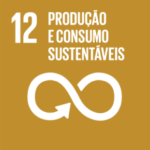
5 children’s books that teach how to preserve the planet
This Sunday, April 2nd, is International Children’s Book Day, and Peggada couldn’t let this date pass without one of our suggestions. We share four suggestions
We didn't find any happenings mapped to your criteria.
Try the traditional search to find articles not yet mapped with RUA.
We didn't find any happenings mapped to your criteria.
Try the traditional search to find articles not yet mapped with RUA.
We didn't find any happenings mapped to your criteria.
Try the traditional search to find articles not yet mapped with RUA.
We didn't find any happenings mapped to your criteria.
Try the traditional search to find articles not yet mapped with RUA.
A White Book on the book sector’s carbon footprint was presented during the Book 2.0 event, the result of a pioneering study that shows some figures we had never thought of before. For example: did you know that each book sold has an average impact of 555 g of CO2?
To analyze how Portugal produces books, a pioneering study was carried out by Publishing2030 Accelerator with the support of the Portuguese Publishers and Booksellers Association (APEL), which resulted in the White Book on the Carbon Footprint of the book sector.
“Sustainability is no longer an option, it’s an imperative that all sectors, including ours, must address as a matter of urgency,” Pedro Sobral, president of APEL, says in the study.
This study defined six categories of emissions covering the book supply chain, from raw materials to the customer’s hands, which, when combined, contribute to an estimate of the overall carbon impact of the Portuguese book sector. These have been defined as:
1. Publisher
2. Paper
3. Other production factors (ink, cardboard for transportation, adhesive tape and other materials)
4. Printing
5. Distribution to the warehouse
6. End of use of unsold stock
The study found that, in 2023, the Portuguese publishing market produced approximately 9,874 tons of CO2 equivalent, which represents around 0.017% of Portugal’s total emissions. Specifically, each book sold has an average impact of 555 g of CO2e, which is equivalent to driving 5.13 km in a new car or consuming 15.4 hours of streaming content. This survey showed that the biggest sources of emissions are in the production of paper (41%) and printing (28%), with other raw materials such as inks and glues contributing 20%.
Paper and printing are the two processes with the greatest impact, and in Portugal the focus of paper manufacturers, such as The Navigator Company, has been on achieving decarbonization through resource efficiencies, which includes, for example, the use of renewable energies in the production of virgin pulp and paper.
As far as printing is concerned, Apigraf – the Portuguese Association of Printing and Papermaking Industries – carried out a study to calculate the carbon footprint of a book and created standard emission factors for printing in line with Integraf recommendations (the trade association that promotes and protects the interests of the printing industry at European level) for inks, ribbons and other materials.
Overall, the White Book presented in Book 2.0 offers practical recommendations for the sector to work together to tackle climate impacts, namely by identifying areas where collective action can be taken to accelerate the process of reducing emissions throughout the supply chain.
This White Book serves as a meeting point for the sector and as a starting point for collaborative efforts to reduce the shared impact.


This Sunday, April 2nd, is International Children’s Book Day, and Peggada couldn’t let this date pass without one of our suggestions. We share four suggestions

If you have books that you no longer need, there are places that will appreciate your donation. Find out the best places to give your

Reading is a great habit, but it can lead to unnecessary shopping and a backlog of books at home. However, there is way to be

This article promotes an action that encourages the reduction of waste generation through prevention, reduction, recycling, and reuse.
➡️ To discover more businesses that are aligned with Sustainable Development Goal 12 “Sustainable Production and Consumption” click here.
➡️ For news, tips and interviews about this topic, click here.
➡️ Want to know more about the 17 United Nations Sustainable Development Goals? Click here
Esta publicação também está disponível em:
![]() Português (Portuguese (Portugal))
Português (Portuguese (Portugal))

